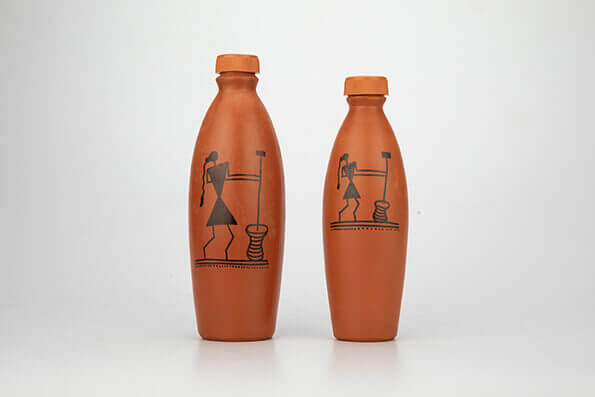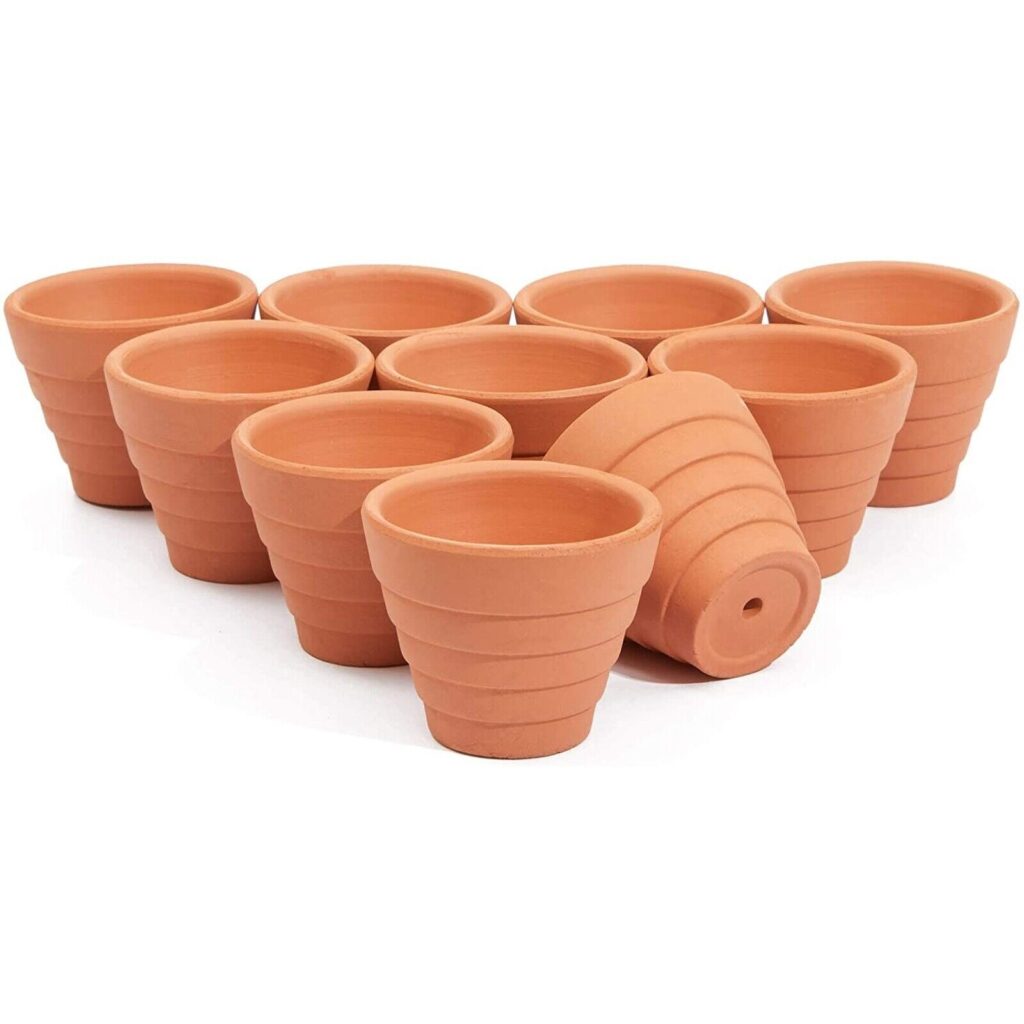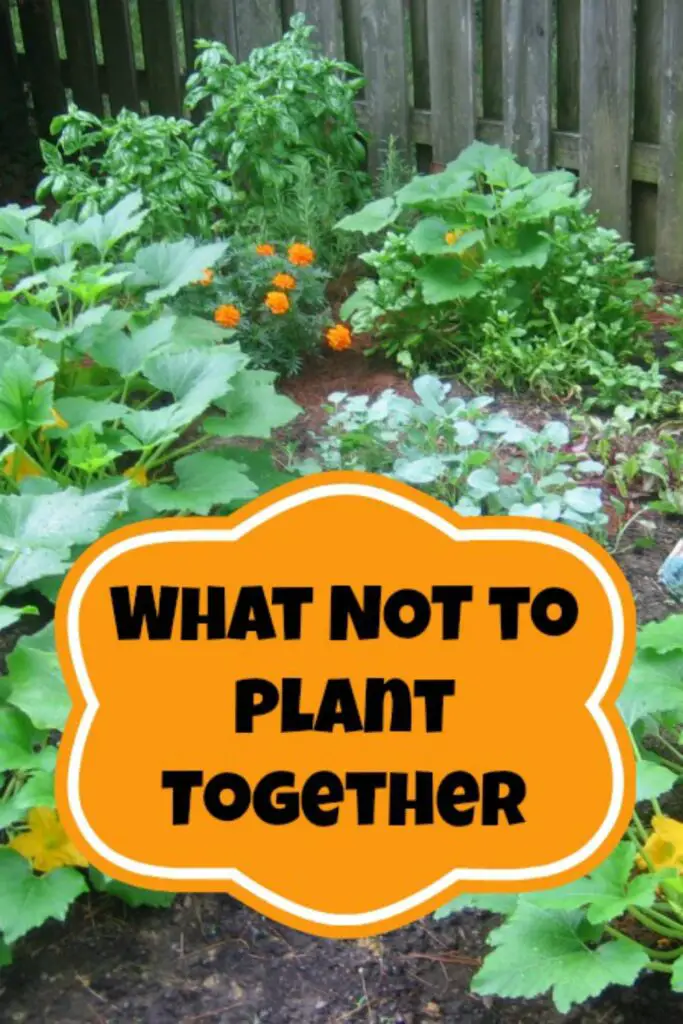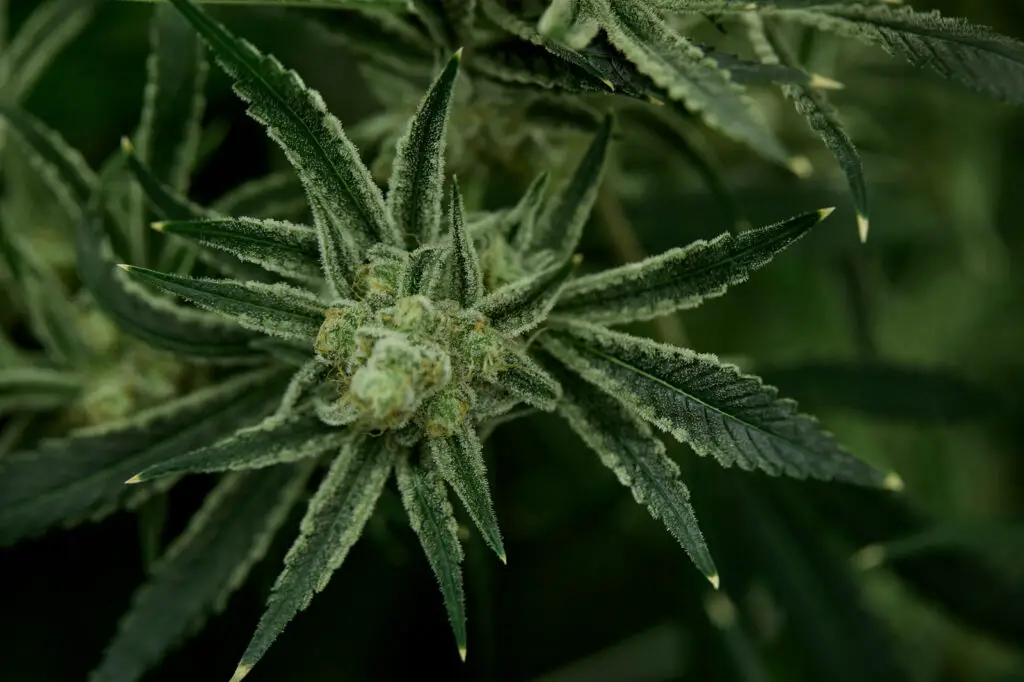In general, clay pots are better than plastic pots. They are more breathable and provide better drainage for plants, as well as being more aesthetically pleasing.
Clay also helps regulate temperature and humidity levels for plants. On the other hand, plastic pots are generally cheaper, more durable, and lighter, making them easier to move around and transport. Ultimately, the choice between clay and plastic pots depends on personal preference, the plants being grown, and the environment in which they will be grown.
For example, plants that require a lot of water may do better in clay pots with better drainage, while plants that require less water may thrive in plastic pots that hold moisture better.

Credit: mitticool.com
Pros And Cons Of Clay Pots
Clay and plastic pots are the two most commonly used pots in gardening. However, choosing the right pot may depend on the specific plant’s needs and how it grows in the pot. We will focus on the pros and cons of clay pots, so let’s dive right in!
Advantages Of Using Clay Pots:
- Clay pots are porous. They allow the soil to breathe and let the excess water evaporate through the pot’s walls. This ensures that the soil remains moist but not waterlogged, which is essential for plants that require good drainage.
- They are excellent at retaining moisture. As the clay pot absorbs moisture from the soil, it slowly releases it back into the pot, ensuring a consistent flow of water to the plant’s roots.
- Clay pots are very durable, making them a solid investment for your garden. If you take good care of them, they will last for many years!
- They are an excellent choice for outdoor gardening as they are heavy and tend to withstand windy weather better than plastic pots.
Disadvantages Of Using Clay Pots:
- Clay pots can be more expensive than plastic pots, particularly if they are hand-made or imported from another country.
- They are heavier than plastic pots, making them difficult to move around, particularly once the plant is established. This can be an issue for gardeners who like to move their plants around often to manage sunlight exposure or for aesthetic purposes.
- Clay pots are more fragile than plastic pots, which can be an issue if you have kids or pets that like to play in the garden.
Clay pots have a lot of advantages, particularly for outdoor gardening. However, they are not the perfect choice for everyone, and gardeners need to consider the pros and cons before making an informed decision.
Pros And Cons Of Plastic Pots
When it comes to gardening, choosing the right pot is vital for the health and growth of your plants. Clay and plastic pots are two popular pot materials on the market. Although both materials have their advantages and disadvantages, we will discuss the pros and cons of plastic pots in particular.
Advantages Of Using Plastic Pots
Plastic pots are affordable and widely available in different sizes, shapes, and colors. They are lightweight, making them easy to move around. Here are some other benefits of using plastic pots:
- Plastic pots are durable and long-lasting.
- They are resistant to breakage, unlike their clay counterparts.
- Plastic pots do not absorb moisture easily, which helps prevent overwatering and root rot.
- They are easy to clean, and you can reuse them multiple times.
- They can retain moisture better in hotter climates, ensuring your plants are sufficiently hydrated.
Disadvantages Of Using Plastic Pots
As with any gardening material, plastic pots come with some disadvantages, including:
- Plastic pots can become brittle and crack over time in sunlight and extreme temperatures.
- They can heat up quickly, causing the soil in the pot to dry out quickly.
- Plastic pots may not offer as much insulation for roots in colder temperatures.
- Some plastic pots contain dangerous chemicals harmful to the environment.
- Plastic pots can be less aesthetically pleasing than clay pots, and may not add as much value to your home decor.
Overall, choosing the right pot for your plants is crucial, and plastic pots may be a good solution for gardeners on a budget or those looking for durable, easy-to-clean options. However, it is important to consider all factors, including aesthetics and environmental impact, before making your final decision.
Remember, a healthy growing environment is essential for your plants to thrive, so carefully assess your options and choose the best pot for your specific needs.
Which One To Choose?
Factors To Consider When Choosing A Pot
When it comes to choosing the perfect pot for your plants, there are several factors to consider. Below are some of the crucial factors you should keep in mind:
- Plant’s water requirements
- Type of plant
- Location of the pot
- Size of the pot
- Aesthetics and design
- Durability and longevity of the pot
Comparison Of Clay And Plastic Pots Based On The Factors Above
Plant’S Water Requirements
Clay pots are porous, allowing the soil to breathe and water to evaporate quickly. This feature benefits plants that require well-draining soil and less water. On the other hand, plastic pots are non-porous, making water retention in the soil much longer.
As such, plastic pots are suitable for plants that require moist soil.
Type Of Plant
Clay pots are suitable for plants that prefer dry or well-draining soil, such as succulents and cacti. In contrast, plastic pots are ideal for plants that require moist soil, such as ferns and tropical plants.
Location Of The Pot
Clay pots are suitable for outdoor use, as their porous nature allows the soil to breathe and excess water to evaporate quickly. However, they may crack or break due to weather exposure. Therefore, plastic pots are a better option for indoor plants or outdoor use in extreme weather conditions.
Size Of The Pot
Clay pots tend to be heavier compared to plastic pots, especially if they are larger in size. Therefore, if you are looking for a lightweight option, it may be best to choose plastic pots, especially for larger plants.
Aesthetics And Design
Clay pots are known for their rustic and earthy look, making them perfect for adding a natural touch to your space. Additionally, with a little creativity, you can customize the pots by painting or etching designs. Plastic pots come in various colors and designs, making them ideal for creating a modern or vibrant look in your home.
Durability And Longevity Of The Pot
Clay pots are more fragile compared to plastic pots, and they are prone to breakage if not handled carefully. However, they are longer lasting and can be reused for several years. In comparison, plastic pots can last for a shorter period, especially if exposed to direct sunlight, which can cause them to become brittle and break.
Which One Is Better For Plants?
Both clay and plastic pots have their advantages and disadvantages. The choice mainly depends on the type of plant you have and your personal preference for aesthetics. For plants that prefer well-draining soil and require less water, clay pots are an excellent choice.
On the other hand, for plants that require moist soil and high water retention, plastic pots are the better option. Ultimately, the most important thing is to choose a pot that meets your plant’s specific needs while also considering durability and aesthetics.
Tips For Caring For Your Pots
Clay Vs Plastic Pots: Which Is Better And Why?
Choosing the right pot is crucial for the growth and development of your plants. And with so many options available, deciding between a clay or plastic pot can be overwhelming. In this section, we’ll look at the pros and cons of each material to help you make an informed choice.
Taking proper care of your pots is just as essential as choosing the right one. Here are some essential tips to keep your plants healthy and thriving.
General Tips For Maintaining Healthy Plants
- Water your plants according to their needs. Overwatering can lead to problems like root rot and fungal diseases, while underwatering can cause wilting and stunted growth.
- Use high-quality potting soil that provides adequate drainage and nutrients for your plants.
- Make sure your plants receive enough sunlight or shade, depending on their requirements.
- Fertilize your plants regularly to support growth and keep them healthy.
- Keep an eye out for pests and diseases and take prompt action if you notice any signs.
Specific Care Tips For Clay Pots
Clay pots are porous, which means they can absorb moisture from the soil and release it slowly. Here are some care tips specific to clay pots:
- Soak new clay pots in water for a few hours before planting to prevent them from absorbing too much moisture from the soil.
- Avoid exposing clay pots to extreme temperatures as they can crack or break.
- Clean your clay pots regularly to prevent the buildup of salts and minerals on the surface.
Specific Care Tips For Plastic Pots
Plastic pots are lightweight and durable, but they can also retain more moisture than clay pots. Here are some care tips specific to plastic pots:
- Use a well-draining soil mix to prevent water from accumulating at the bottom of the pot.
- Avoid placing plastic pots in direct sunlight as they can become brittle over time.
- Clean your plastic pots regularly to prevent the buildup of algae and bacteria.
Choosing between a clay or plastic pot comes down to personal preference and the plant’s needs. By following these essential care tips, you can ensure that your plants remain healthy and happy in their new homes.
Final Thoughts
Which Is Better: Clay Or Plastic Pots?
As a gardener, you may find it overwhelming to choose the right pot for your plants. Amongst all options, clay and plastic pots are popular choices, but which one is better?
Recap Of The Pros And Cons Of Clay And Plastic Pots
Here’s a quick recap of the pros and cons of each pot type.
Clay Pots
Pros:
- Natural look and feel
- Better drainage
- Suitable for plants that love well-drained soil
- Allows air and water movement through the pot
- Better for plants that need less watering
Cons:
- Fragile and breakable
- Can be expensive
- Heavy
- Can lead to water retention in pots if used for water-loving plants
- Not suitable for cold climates
Plastic Pots
Pros:
- Lightweight and easy to move around
- Affordable
- Durable
- Can hold moisture better than clay pots
- Ideal for water-loving plants
- Good for beginners
Cons:
- Does not allow air and water movement through the pot
- Can be affected by sunlight and heat, leading to cracking or fading
- Not suitable for plants that require well-drained soil
Final Recommendation Based On Different Situations
It’s essential to choose the right pots for your plants, depending on the situation you are in. If you live in a hot or humid climate, or if you are a newbie in gardening, it’s best to choose plastic pots.
These types of pots are low maintenance and durable. Due to its moisture retention properties, plastic pots can benefit water-loving plants.
If you are into planting succulents or cacti, or live in a cold, wet climate, clay pots is the perfect choice. It offers better drainage than plastic pots, which means you can avoid water retention that could harm your plants.
Moreover, clay pots look more natural and pleasing to the eye.
Importance Of Choosing The Right Pot For Plants’ Health
Choosing the right type of pot is vital for your plant’s health. Your plants can suffer from over or under-watering, nutrient deficiency, and root rot if you use the wrong type of pot. It’s important to know the specific needs of your plants and choose the pot accordingly.
Plants need the right amount of soil, water, and nutrients to grow healthily. As a gardener, it’s your responsibility to provide the best environment for your plants to grow. Remember, the pot you choose is the home of your plant, so make sure you choose the right one to ensure their optimum health.
Both clay and plastic pots have their advantages and disadvantages. Choosing the right pot depends on your gardening experience, climate, plant needs, and personal preferences. Make sure to remember the key points when choosing a pot for your plants, and they will reward you with healthy growth.
Frequently Asked Questions On Which Is Better Clay Or Plastic Pots
What Are The Benefits Of Clay Pots Over Plastic Pots?
Clay pots are eco-friendly, provide better aeration, and regulate moisture better than plastic pots. They are also more durable and add an aesthetic appeal to your garden.
Are Plastic Pots Harmful To Plants?
Plastic pots can be harmful to plants due to their poor aeration and moisture retention. The chemicals in the plastic may also leach into the soil, causing harm to the plant.
Which Pots Are Better For Outdoor Plants?
For outdoor plants, clay pots are better as they provide better insulation, which protects the roots from extreme fluctuations in temperature. They also maintain a natural ph balance.
Are Clay Pots More Expensive Than Plastic Pots?
Clay pots are generally more expensive than plastic pots, but they offer better value for money in the long run due to their durability, moisture regulation, and aesthetic appeal.
How Do You Clean Clay Pots?
To clean clay pots, soak them overnight in a solution of water and vinegar. Then, scrub them with a brush and rinse with clean water. Allow them to air dry completely before using them again.
Can I Use Plastic Pots Indoors?
Plastic pots are suitable for indoor plants as they are lightweight, easy to move around, and can be easily sanitized. However, it is crucial to ensure proper drainage to prevent waterlogging and root rot.
Conclusion
After weighing the pros and cons of clay and plastic pots, it is safe to say that both have advantages and disadvantages. Clay pots are durable, porous, and better for plants that require good drainage. In contrast, plastic pots are lightweight, flexible, and an economical choice for indoor plants.
Ultimately, choosing between clay or plastic depends on the specific needs of your plants and preferences as a gardener. With proper care and attention, both clay and plastic pots can provide a healthy environment for your plants to thrive. Consider the pros and cons of both options before making a decision, and remember that the most important factor is to provide your plants with a suitable environment where they can grow and flourish.
Happy gardening!



